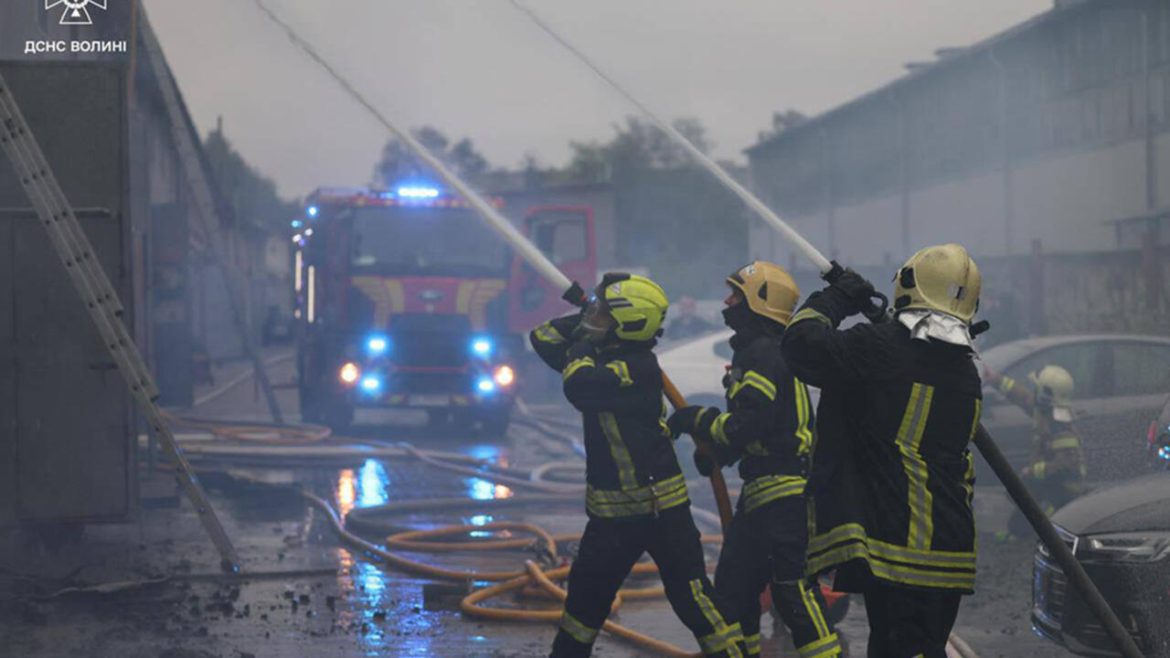KYIV, Ukraine — Russia carried out its largest missile and drone assault on Ukraine since the start of the full-scale invasion, launching 741 projectiles on July 9, 2025, Ukrainian officials said.
The strikes targeted military infrastructure, including an airfield in the Volyn region near the Polish border, and caused widespread destruction in cities such as Lutsk and Dubno.
Ukraine’s Air Force reported that air defense systems intercepted 711 of the incoming drones and missiles.
The attack followed recent statements by former U.S. President Donald Trump pledging expanded military assistance to Ukraine. Russian forces concentrated the assault on military and industrial facilities, according to Ukrainian military reports.
Poland responded by scrambling fighter jets to patrol its airspace amid concerns about the proximity of the strikes. Polish authorities confirmed heightened military readiness but reported no incursions into Polish territory.
The Russian Ministry of Defense confirmed responsibility for the coordinated attack, stating that the operation aimed to degrade Ukraine’s military logistics and capabilities.
“This is another brutal act of aggression that threatens not only Ukraine but also the security of our neighbors,” Ukrainian President Volodymyr Zelensky said in a statement. He urged allied nations to provide additional air defense systems and condemned the strike as a violation of international norms.
Ukrainian emergency services and military units continue to assess the extent of the damage. Initial reports indicate that civilian infrastructure was also affected, although the full casualty count remains unconfirmed.
Polish military leaders held emergency consultations following the strike, emphasizing the need for vigilance along NATO’s eastern flank.
International leaders have condemned the escalation and renewed calls for diplomatic efforts to end the conflict. The European Union, NATO, and the United Nations have scheduled meetings to assess the implications of the attack and consider next steps.
The July 9 assault underscores the intensifying nature of the war in Ukraine and the risks of broader confrontation near NATO’s borders.

